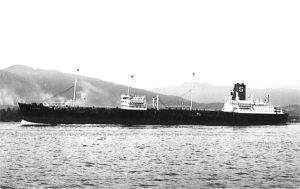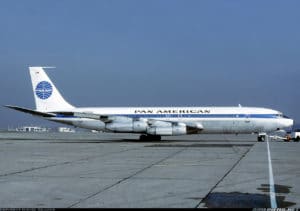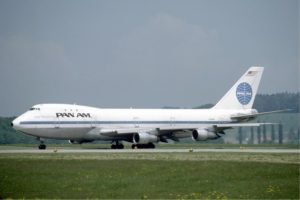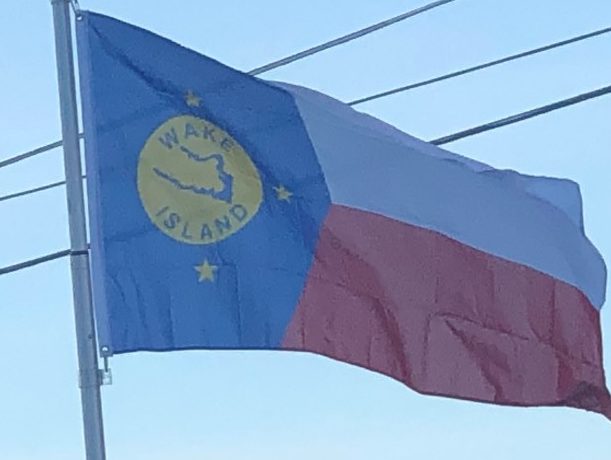
An estimated six million gallons of refined fuel oil – including 5.7 million gallons of aviation fuel, 168,000 gallons of diesel oil and 138,600 gallons of bunker C fuel – spilled into the small boat harbor and along the southwestern coast of Wake Island to Peacock Point. Large numbers of fish were killed by the oil spill, and personnel from the FAA and crewmen from the ship cleared the area closest to the spill of dead fish.
Commercial Aviation Ends and the U.S. Air Force Assumes Control:
In the early 1970s, higher-efficiency jet aircraft with longer-range capabilities lessened the use of Wake Island Airfield as a refueling stop, and the number of commercial flights landing at Wake declined sharply. Pan Am had replaced many of its Boeing 707s with more efficient 747s, thus eliminating the need to continue weekly stops at Wake.

Other airlines began to eliminate their scheduled flights into Wake. In June 1972 the last scheduled Pan Am passenger flight landed at Wake, and in July Pan Am’s last cargo flight departed the island, marking the end of the heyday of Wake Island’s commercial aviation history. During this same time period the U.S. military had transitioned to longer-range C-5A and C-141 aircraft, leaving the C-130 as the only aircraft that would continue to regularly use the island’s airfield. The steady decrease in air traffic control activities at Wake Island was apparent and was expected to continue into the future.
On June 24, 1972, responsibility for the civil administration of Wake Island was transferred from the FAA to the United States Air Force under an agreement between the Secretary of the Interior and the Secretary of the Air Force. In July, the FAA turned over administration of the island to the Military Airlift Command (MAC), although legal ownership stayed with the Department of the Interior, and the FAA continued to maintain the air navigation facilities and provide air traffic control services. On December 27, the Chief of Staff of the Air Force (CSAF) Gen. John D. Ryan directed MAC to phase out en-route support activity at Wake Island effective June 30, 1973. On July 1, 1973, all FAA activities ended and the U.S. Air Force under Pacific Air Forces (PACAF), Detachment 4, 15th Air Base Wing assumed control of Wake Island.

In 1973, Wake Island was selected as a launch site for the testing of defensive systems against intercontinental ballistic missiles under the U.S. Army’s Project Have Mill. Air Force personnel on Wake and the Air Force Systems Command (AFSC) Space and Missile Systems Organization (SAMSO) provided support to the Army’s Advanced Ballistic Missile Defense Agency (ABMDA). A missile launch complex was activated on Wake and, from February 13 to June 22, 1974, seven Athena H missiles were launched from the island to the Roi-Namur Test Range at Kwajalein Atoll.
Vietnam War Refugees and Operation New Life:
In the spring of 1975, the population of Wake Island consisted of 251 military, government and civilian contract personnel, whose primary mission was to maintain the airfield as a Mid-Pacific emergency runway. With the imminent fall of Saigon to North Vietnamese forces, President Gerald Ford ordered American forces to support Operation New Life, the evacuation of refugees from Vietnam. The original plans included the Philippines’ Subic Bay and Guam as refugee processing centers, but due to the high number of Vietnamese seeking evacuation, Wake Island was selected as an additional location. In March 1975, Island Commander Maj. Bruce R. Hoon was contacted by Pacific Air Forces (PACAF) and ordered to prepare Wake for its new mission as a refugee processing center where Vietnamese evacuees could be medically screened, interviewed and transported to the United States or other resettlement countries.
